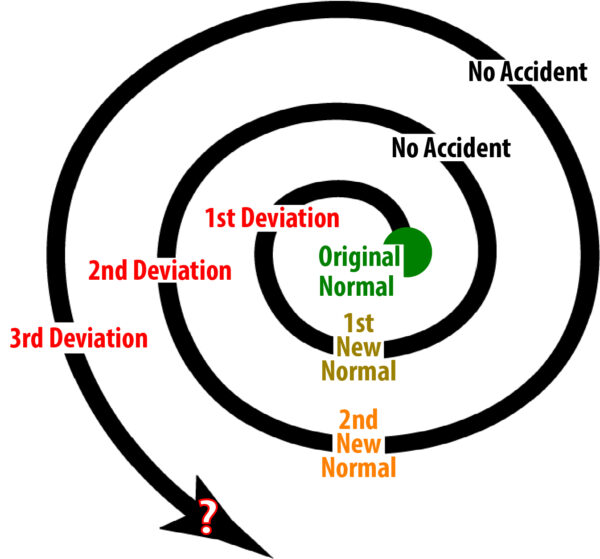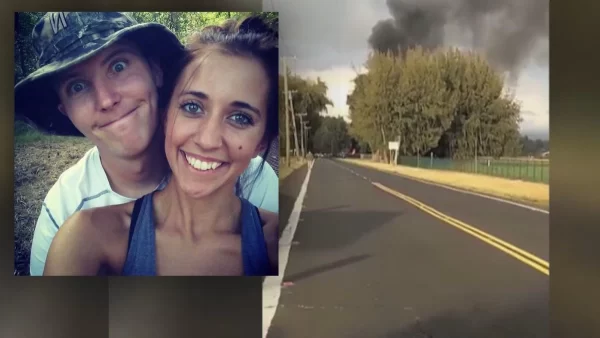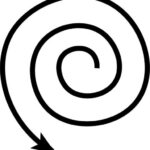Skydive Chesapeake Is Deviant. The USPA Is Much Worse.
I began this blog referring to a phrase called “Normalization of Deviance”. That was a phrase that was NASA's flaw in the Space Shuttle Challenger Accident. This graphic illustrates it:

When I was jumping there, Skydive Chesapeake has many examples of this deviant behavior. They’ve gone through many “normal”, with untrained pilots, bad spotting, seat belt violations and others. The article that I originally sighted was from USPA Training Advisor, Jim Crouch, and it talked about an incident in 1995 when 12 people were killed. Their Queen Air lost power and crashed and the NTSB found many examples of the kinds of things that are Normalization of Deviance. They’ve been found in many skydiving accidents involving aircraft.
The United States Parachute Association isn't deviant. Their behavior has never wavered from what is normal.
On February 1st, 2024 I emailed Dave Grabowski, the Eastern Region USPA Director, with this request. “I’m interested in all drop zones in the Eastern Region that have current Flight Operations Handbooks and USPA Aircraft Status Forms. Please provide those to me. Thank you.”
Dave’s response verified what I knew. He said, “I don't have the info you are looking for, and even if I did, it's not my or USPA's place to provide what are essentially private business documents to a third party.”
Sixteen years before my communication with Grabowski, the National Transportation Safety Board issued a report, Special Investigation Report SIR-08/01 . It listed skydiving deaths as a result of aircraft crashes. It said that, “Since 1980, 32 accidents involving parachute operations aircraft have killed 172 people, most of whom were parachutists.”
The USPA responded to the report and said that they would put together a document about aircraft safety operations. They also had a document of pilot safety training. The Special Investigation was an NTSB product but the FAA responded by saying, in 2011, that “Your manual will help parachutists perform more safely.”
The USPA's response in 2011 didn’t have the effect that the NTSB sought on Skydive Chesapeake or to the Oahu Parachute Center. On June 21, 2019 a King Air crashed there killing 11 people. That is reported on in Oahu Parachute Center accident investigation. Three of them were not skydivers, just tourists seeking tandem jumps.

Bryan and Ashley Weikel on their 1st anniversary (KKTV News11 (Colorada Springs, CO)
What happened on June 21, 2019 at Dillingham Airfield (HDH), Mokuleia, Hawaii was exactly like what the NTSB reported on in 2008. Jim Crouch warned about and its occuring at Skydive Chesapeake and other drop zones today.
The FAA said that the USPA's Operation's Manual and it Pilot Training Guidance would enhance skydiving safety but that assumes that those documents would be used. It is not. The USPA has no knowledge of any drop zone using them. According to Gabowski those are, "private business documents".
In their report, the NTSB said the Oahu Parachute Center operator had 18,000 tandem jumps but, “no previous experience running a parachute operation.” He also didn’t have the integrity to operate a safe drop zone. I mentioned this at Safety Day in 2024. Ben Harris, Skydive Chesapeake's operator, does not have the integrity to operate a Safety Culture. That got me physically removed from the event.
Many people who were at the event that day know what Harris did me. It's in my original post , "Deviance at Skydive Chesapeake". His character counters safety.
The NTSB Report from Hawaii stated that the OPC did not have a training curriculum or company training manuals for OPC pilots. A former OPC pilot, who was not a flight instructor but provided training to multiple OPC pilots (not including the accident pilot), stated that the company did not provide him with direction for training except to teach new pilots to start the engines, taxi, take off, fly the jump run, and land the airplane, after which the pilots would be “good to go.” The former pilot also stated that “there was no money to take the airplane off the line” for training and that training consisted of “a couple of jump runs.” The former pilot further stated that most of the company’s training involved viewing King Air Academy videos on YouTube instead of hands-on training.
Another former OPC pilot stated that the company’s King Air training “was a joke.” This former pilot also stated that his training on the airplane was “minimal” and that his instructor advised, at the completion of training, “not to get uncoordinated.”
The airplane was not airworthy. The pilot was not trained. No aircraft operational assignment existed.
I was banned from jumping at Skydive Chesapeake after citing safety violations. They included not having enough seat belts in the Piper Navajo, N6719L. (This is a violation of CFR § 91.107) Welding going on in the packing area, no ground Support Personnel at boarding and poor pilot training, among others.
The 2008 NTSB Report was repeatedly cited in the Report of what happened at Oahu. Many of the things that happened between 1980 and 2008 were repeated at the field in Hawaii. The operational plans and the pilot training mission that the USPA specified after 2008 did nothing at Hawaii and nothing at Skydive Chesapeake.
When they published their report, the NTSB thought the USPA would do something, and they did. They published a template, the “Skydiving Aircraft OPERATIONS MANUAL”. In 2011 the FAA said it will positively effect how, “parachutists perform more safely”. According to Grabowski, there is no info on who in the Eastern Region has an operational plan or who is training their pilots. They don’t want fellow skydivers to have these documents because, “it's not my or USPA's place to provide what are essentially private business documents to a third party.”
Why is that true? The current USPA “Group Membership Manual” asks if there is Skydiving Aircraft OPERATIONS MANUAL for the drop zone, but according to Grabowski, he doesn’t know which drop zone’s have it. It also asks if there is an initial and recurrent training for jump pilots at the drop zone? According to Grabowski that’s private information and not available. He doesn’t know it. If there was an Operations Manual, and it was followed, what happened in Hawaii wouldn’t have happened. Bryan and Ashley would be alive.
Many of the things that happened in Mokuleia, Hawaii are present at Gooden Field in Ridgely, MD, (Skydive Chesapeake). I attended Skydive Chesapeake’s Safety Day on March 23, 2024 and was told by the Drop Zone owner that he does have a Operation’s Manual, because of insurance requirements. It’s not available to any of his customer’s. Why is that? If he had a safety plan his customer’s should know about it. Maybe he has first time and recurrent pilot training. That would be another aspect of his operation that his customers should know.
In my original posts from 2021, Deviance at Skydive Chesapeake and Much is Awry in Ridgely it can be seen how far that drop zone is from where it should be.
In that original post I referred to a welding operation in the packing area. That was quite bizarre. There wasn’t a lease so the owner could do whatever he wanted.
Not having enough seat belts in Navajo, N6719L happened repeatedly. Loadmasters and jumpmasters don’t exist then and they probably still don’t exist now and it’s because the Safety and Training Advisor (S&TA) is the drop zone owner!
The USPA accepts this despite saying that operating without enough seat belts is breaking the law. Evidence of this is at Ten Jumpers in an airplane configured for eight. Ron Bell, USPAs Director of Safety and Training went to Skydive Chesapeake a week after I was suspended from the drop zone in March of 2020. He was told about the lack of seat belts and he should have established that it happened. There was nothing done about it.
Operations Manuals are “private information” according to the USPA. Nobody knows if any drop zone Operations are acceptable. The kind of training done for pilots at the Oahu Parachute Center was nothing, and this was many years after the USPA wrote Operations Manuals for their drop zones.
This isn't the only thing where USPA has done nothing. The Federal Aviation Administration’s Civil Aeromedical Institute, the Parachute Industries Association, and the USPA has known, since 1998, that restraint systems for parachutists are inadequate. Read the Sullivan, Missouri Crash Report and for those with strong stomachs, the Sullivan, Missouri Injury Report will shock you. Since 2011 Advisory Circular 105-2D clearly stated how to make it safer. I don’t think that any drop zone in the world has done it.
Furthermore, the USPA has established that Safety Management System (SMS) should be at drop zones. Nothing is happening about this either.
I made a proposal to the USPA in their board meeting in 2022. It recommended a safety proposal for drop zones with a Safety Committee just like in the SMS system. That’s in my post Proposal for Reform. The plan that I proposed would not put anyone on that board that receives an income from the drop zone. The safety personnel at the Oahu Parachute Center, if there was one, was the drop zone owner, just like Skydive Chesapeake.
My proposal calls for two types of Group Memberships. One type does have members on the committee who receive income from the drop zone. Skydive Chicago would be potentially a “Legacy Group Member”. They would provide most or all of the functions and services called for in USPA’s Skydiving Aircraft Operations Manual and the drop zone’s Flight Operations Handbook with paid staff members. The other type would be “Safety Committee Group Member”. They have qualified volunteers who form drop zone Safety Committee to provide some of the functions and services called for. In those drop zones the Committee’s do not receive income.
Skydive Chesapeake and the Oahu Parachute Center would be Safety Committee Members. Of course, no drop zone would have to be either. They could choose just not to have an SMS system. I wouldn’t want to jump at a drop with no safety system.
That’s another thing I’ve heard from Graboski and other USPA directors. USPA “C” and “D” license holders don’t want to get involved in dealing with safety on their drop zones. Maybe that is true but what about the others? Bryan and Ashley Weikel would have wanted to know. Every drop zone should tell their customers their safety system. They should admit to that and have the credentials to prove it. If they don’t, they should admit to that to. That is where the USPA should get involved. The USPA’s Skydiving Aircraft Operations Manual and the drop zone’s Flight Operations Handbook should be open to the public.
On July 10, 2022 Laura Olson was killed in a skydive at Skydive Chesapeake. She had three jumps. An Incident Report says the accident was recorded in August of 2023. That too is little weird being thirteen months after the event. The incident says that the weather was good with a five mile-an-hour wind and that Olson landed in trees and fell out of them. The fall from the trees caused a fatal injury.
I was kicked out of the drop zone just before Safety Day on 2020 because I brought safety issues up. At that time a lot of the jumpers were landing off the drop zone for bad spots. I made a map with all roads identified so that my wife and I could retrieve jumpers that landed outside the drop zone. It happened nearly every day.
In that map, it can be seen that there are no trees, except in the east and southeast. Olson’s jump was in a 5 mph wind so the spot was close to the landing area. If the wind wasn’t out of the east or southeast there were no trees over the spot. The spot might have been bad, and if so, that is why she landed in trees.
Because of the bad spots and because the pilots aren’t trained that should be looked at. They were jumping a Caravan at 13,500 feet. Did other jumpers know the spot was wrong? If it was wrong, that should be called to attention. Both S&TA’s at Skydive Chesapeake make all their money from the drop zone and it isn’t too much. The drop zone owner is one of the S&TAs at the drop zone. The other S&TA was Mrs. Olson instructor on that skydive.
I think the USPA and drop zones run like Skydive Chesapeake and the Oahu Parachute Center are doomed. The NTSB and Congress have their reports. Poor newlyweds are killed. If the drop zones don’t take the steps, like valid SMS System, and if skydivers don’t make it happen, our sport won’t survive, unless you want to go to The Mid-East.
The fault there is with the USPA. Drop zone owners have very conflicted interests. The Oahu Parachute Center was sealed from the start. The practices that owner undertook were awful. A viable SMS system is called for where somebody outside profit is needed. The current USPA system does not have it.

On the subject of Skydiving Drop Zone Safety Violations does the name of “Skydive Myrtle Beach” ring a bell, that Operator was shut down by Horry County and FAA on October 16, 2015 for supposed 112 “Safety Incidents”. As a interested aviation person got to see the entire SDMB Operation from March 2015 up through Drop Zone Closure on October 16, 2015, finally fulfilled one of my Bucket List Items by my Tandem Jump on August 5, 2015. To this day almost ten years later, in my humble opinion see any unsafe
Operations that warranted a Drop Zone Closure by Horry County Department of Airports and FAA.
I don’t know about the Skydive Myrtle Beach. It seems like the County was doing something quite wrong. However, the Operation Manager at the Oahu Parachute Center, George Rivera, was conducting a very unsafe business. The NTSB knew that and the USPA should have known it too. That’s true for Skydive Chesapeake as well. Ron Bell, USPA’s Director of Safety and Training, knew that Ben Harris was not following FAA regulations. That was my problem with the USPA. They should have known about both operations, and they didn’t. People were killed.